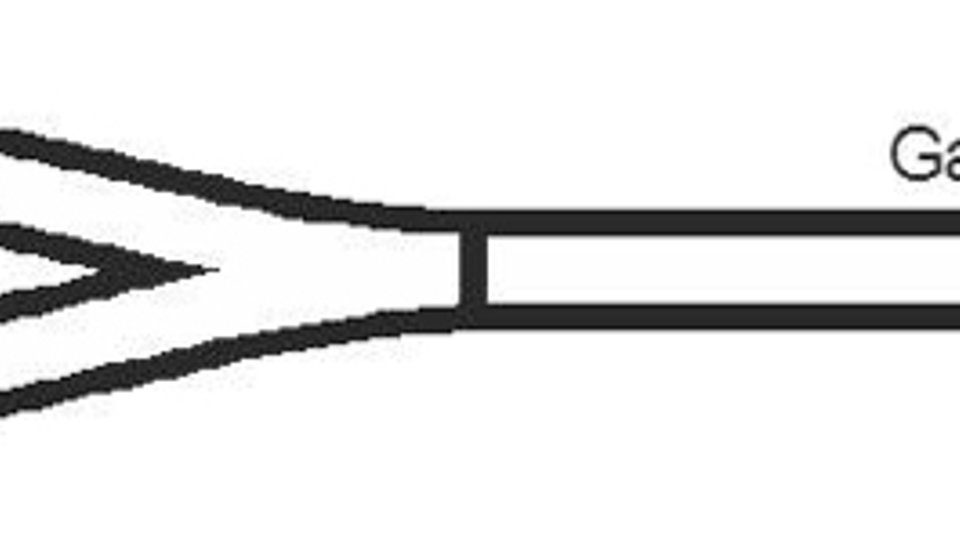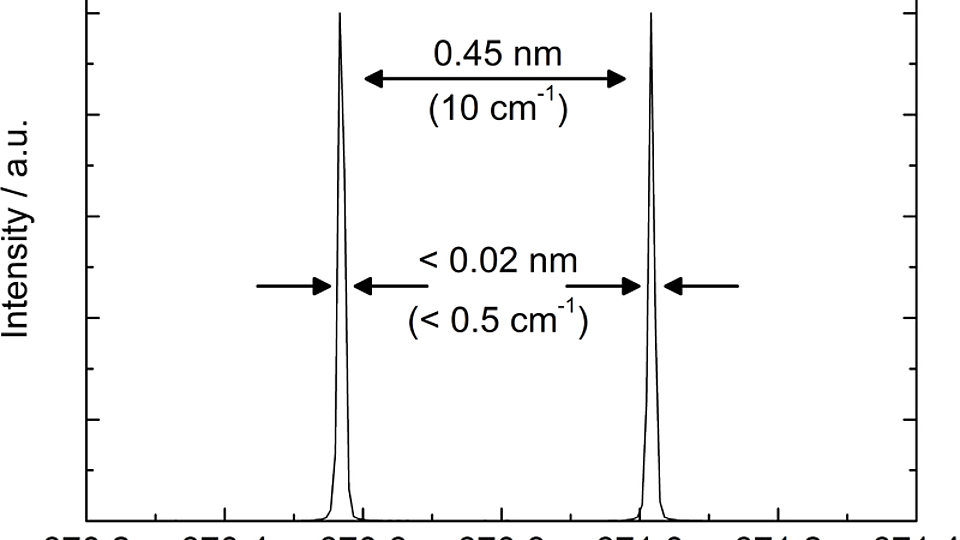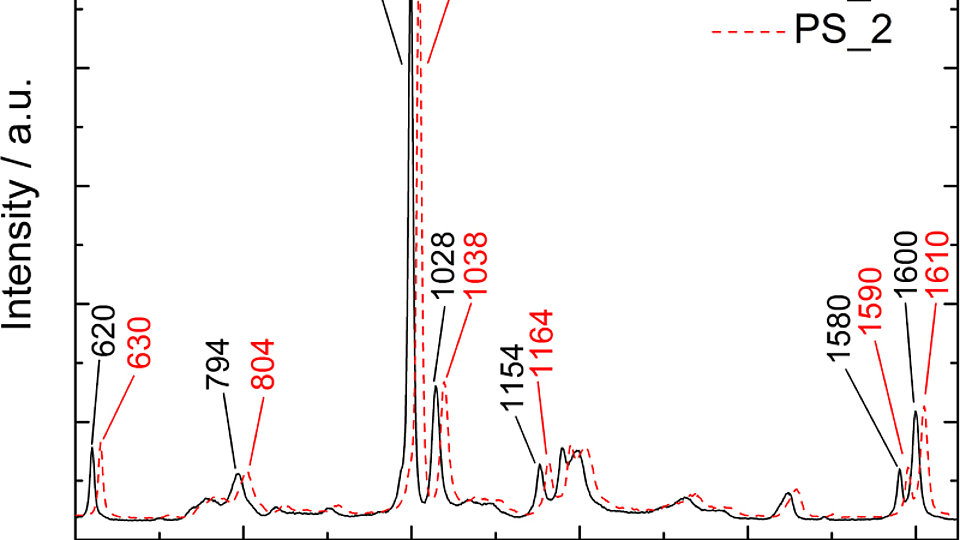Dual wavelength diode laser at 671 nm for Shifted Excitation Raman Difference Spectroscopy
Diode lasers are well established excitation light sources for Raman spectroscopy. However, weak Raman signals can be covered by fluorescence of e.g. organic and biological samples. Here, shifted excitation Raman difference spectroscopy (SERDS) is a promising technique to separate Raman signals from a disturbing background. For SERDS, a laser light source is necessary that provides two excitation wavelengths with a sufficient spectral distance of 10 cm-1 for most solid and liquid samples. Recently, hybrid microsystem diode laser-based light sources with an emission at 671 nm suitable for SERDS have been successfully demonstrated [1]. The compact modules are assembled on a microbench with a footprint of only 20 mm x 5 mm.
Now, the Ferdinand-Braun-Institut developed this concept further by realizing a monolithic dual-wavelength distributed Bragg reflector (DBR) diode laser with an emission at 671 nm. The device has a footprint of 0.5 mm x 3 mm and consists of two laser cavities. A scheme is shown in Fig. 1. Two ridge waveguide (RW) sections with deeply etched surface DBR gratings are realized. Both DBR mirrors were designed with respect to the necessary spectral spacing of 10 cm-1. A Y-branch coupler section is implemented in the semiconductor chip for one output aperture at the front facet. Separate electrical contacts at Gain 1, Gain 2, and Gain 3 allow an individual control for both excitation wavelengths. For both laser cavities, an output power of 0.1 W was achieved – optical spectra are presented in Fig. 2. Here, the spectral width is smaller than 0.02 nm (0.5 cm-1). The spectral distance between both emission lines is 0.45 nm, i.e. 10 cm-1 well suitable for SERDS.
The capabilities of these diode lasers were experimentally assessed in a Raman spectroscopic set-up. Fig. 3 shows Raman spectra of solid, transparent polystyrene (PS) excited with both laser cavities of the dual wavelength diode laser in the “fingerprint” spectral region. The calibration of the Raman shift scale was carried out to the Raman signals of PS_1 and their literature values. PS_2 was excited with the second laser cavity and show a Raman spectrum of polystyrene with the targeted shift of 10 cm-1.
This monolithically integrated semiconductor light source is ideally suited for mobile sensor systems, such as handheld devices. Properties and first Raman experiments will soon be presented in an invited talk at the conference “Advanced Environmental, Chemical, and Biological Sensing Technologies X at the 2013 SPIE Defence Security and Sensing" [8718-8], 29 April - 3 May 2013, Baltimore, MD, USA.
This work is supported within the project DiLaRa by the Federal Ministry of Education and Research (BMBF) in the program VIP under contract 03V0207.
Publication:
[1] M. Maiwald, Schmidt, B. Sumpf, G. Erbert, H.-D. Kronfeldt, G. Tränkle: "Microsystem 671 nm light source for shifted excitation Raman difference spectroscopy" Appl. Opt., vol. 48, no. 15, pp. 2789-2792 (2009)
FBH research: 19.02.2013


